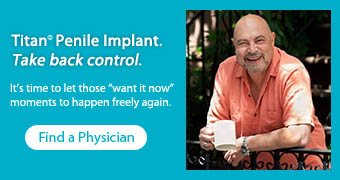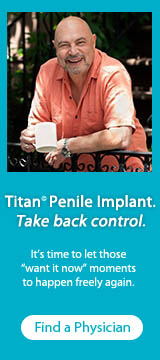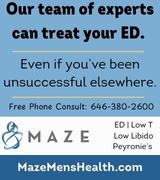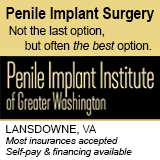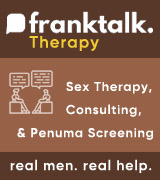A new medical protocol to treat the Peyronie disease was developed based on the clinical study published in Journal of Sexual Medicine, May-2019, The use of a penile traction device reduces the need of cycles of collagenase in patients with Peyronie disease, by Dr. Gómez, Dr. Romero-Otero et al..
The final thought of this clinical research study was that the combination of collagenase together with the penile traction device manages to minimize the number of collagenase cycles and obtains results comparable to other medical studies, achieving an enhancement in the cost of treatment.
2019, penile traction device reduces the use of collagenase in Peyronie disease
Re: 2019, penile traction device reduces the use of collagenase in Peyronie disease
Peyronie's disease (PD) is an accumulation of collagen in the penis that creates a scar, producing a deformity and pain in the erectile state, that affects between 1%-8% of men. ANDROMEDICAL laboratory proposes a new strategy to treat PD based on combined therapy of platelet-rich fibrin matrix (PRFM or activated-PRP) with Andropeyronie, a penile traction device (PTD) designed to treat penile curvatures. Now urologists, their patients and health insurance companies may have a cost-effective alternative to collagenase and surgery for effectively treating Peyronie's disease, without side effects of other therapies.
In 2013 the US-FDA approved the use of collagenase (CCH) for its treatment. Collagenase is an enzyme that breaks the peptide bonds of collagen, but medical studies showed that effectiveness was limited to a 33% correction of penile curvature. In 2013, Dr. Martínez-Salamanca (Spain) carried out a hospital study with the penile traction device called Andropeyronie to treat Peyronie's disease in the acute phase, achieving a 60% correction of the curvature. In 2015 the American Urological Association recommends treating Peyronie's disease with combined collagenase therapy and Peyronie's plaque remodeling, done with manual exercises or with a soft progressive force for a few hours a day with a penile traction device (PTD).
In 2018 Dr. Terlecki (USA) published a clinical study on the use of autologous platelet-rich plasma (PRP) in Peyronie's disease whose conclusions were that the activated-PRP or PRFM appears to be a safe and feasible treatment, more than 80% of patients improved in their degree of curvature. Evidence suggests that platelets play an important role in tissue repair, vascular remodeling and inflammatory and immune responses through secretion of growth factors, cytokines and chemokines. Thus, injection of PRFM could combine mechanical disruption of the plaque, via needle fracture, while simultaneously neutralizing destructive inflammatory processes in an effort to promote a better wound-healing response and stabilize the disrupted plaque. It is important to note that collagenase injection does not address appropriate wound healing or regeneration of the damaged tissue. Clinical study
In 2013 Dr. Chung (Australia) demonstrated that penile traction translates mechanical stimuli into a chemical response leading to activation of cell proliferation. In 2019 Dr. Romero (Spain) published a clinical study demonstrating that the use of a penile traction device reduces the need of cycles of collagenase in patients with Peyronie's disease. Clinical studies
The world of urology is advancing rapidly and clinics are beginning to use this promising combined therapy of platelet rich plasma with penile traction therapy in hopes of wound healing and tissue regeneration. New treatment options for Peyronie's disease are opening up, with benefits for patients, urologists and health insurance companies. Therapy of PRP with PTD is an effective treatment without side effects, easily performed in the doctor's office and a cost-effective alternative to other therapies.
In 2013 the US-FDA approved the use of collagenase (CCH) for its treatment. Collagenase is an enzyme that breaks the peptide bonds of collagen, but medical studies showed that effectiveness was limited to a 33% correction of penile curvature. In 2013, Dr. Martínez-Salamanca (Spain) carried out a hospital study with the penile traction device called Andropeyronie to treat Peyronie's disease in the acute phase, achieving a 60% correction of the curvature. In 2015 the American Urological Association recommends treating Peyronie's disease with combined collagenase therapy and Peyronie's plaque remodeling, done with manual exercises or with a soft progressive force for a few hours a day with a penile traction device (PTD).
In 2018 Dr. Terlecki (USA) published a clinical study on the use of autologous platelet-rich plasma (PRP) in Peyronie's disease whose conclusions were that the activated-PRP or PRFM appears to be a safe and feasible treatment, more than 80% of patients improved in their degree of curvature. Evidence suggests that platelets play an important role in tissue repair, vascular remodeling and inflammatory and immune responses through secretion of growth factors, cytokines and chemokines. Thus, injection of PRFM could combine mechanical disruption of the plaque, via needle fracture, while simultaneously neutralizing destructive inflammatory processes in an effort to promote a better wound-healing response and stabilize the disrupted plaque. It is important to note that collagenase injection does not address appropriate wound healing or regeneration of the damaged tissue. Clinical study
In 2013 Dr. Chung (Australia) demonstrated that penile traction translates mechanical stimuli into a chemical response leading to activation of cell proliferation. In 2019 Dr. Romero (Spain) published a clinical study demonstrating that the use of a penile traction device reduces the need of cycles of collagenase in patients with Peyronie's disease. Clinical studies
The world of urology is advancing rapidly and clinics are beginning to use this promising combined therapy of platelet rich plasma with penile traction therapy in hopes of wound healing and tissue regeneration. New treatment options for Peyronie's disease are opening up, with benefits for patients, urologists and health insurance companies. Therapy of PRP with PTD is an effective treatment without side effects, easily performed in the doctor's office and a cost-effective alternative to other therapies.
Who is online
Users browsing this forum: No registered users and 51 guests
